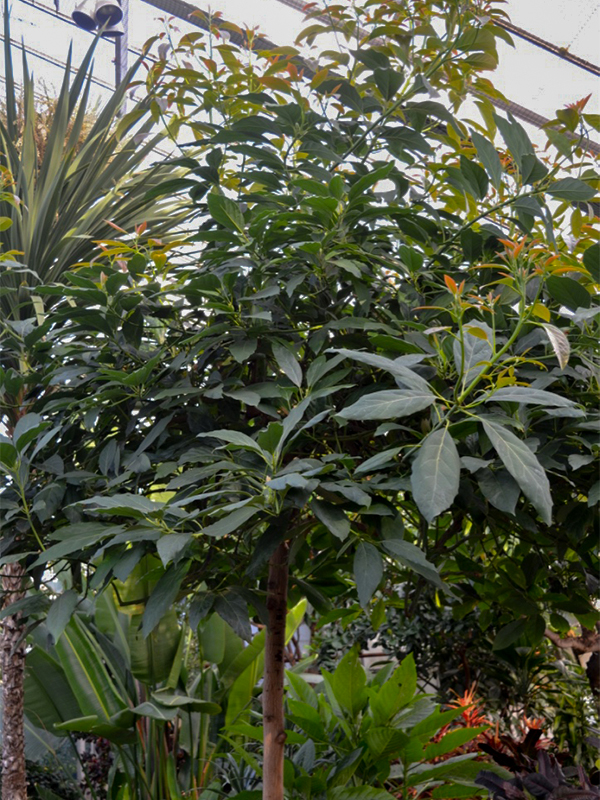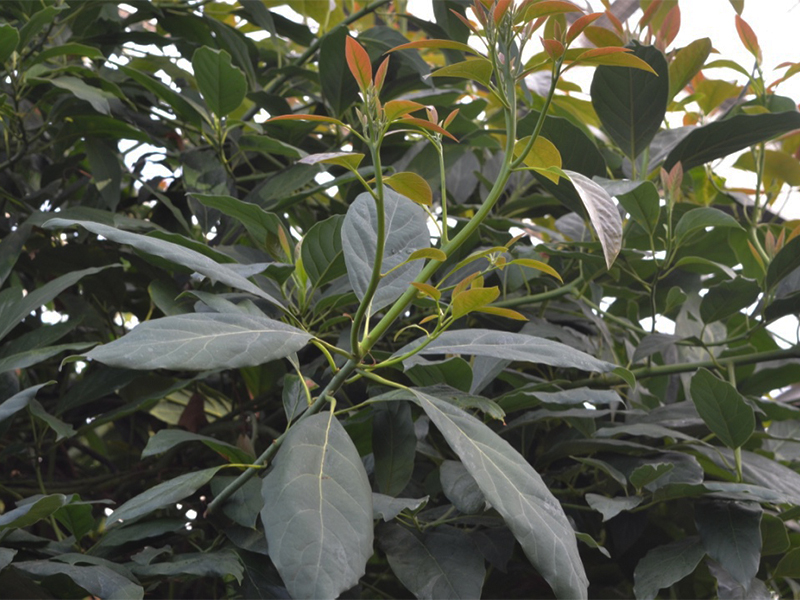| General Description | A dense, broad and fast growing evergreen tree. |
| ID Characteristic | Edible avocado fruit. |
| Shape | Upright broad shape. |
| Landscape | Grown as windbreaks and in gardens for their nutritious and delicious fruit. |
| Propagation | Propagation by grafting or seed.
|
| Cultivation | Plant in full sun to partial shade, with deep, rich, moist but well-drained soil. Not salt or urban tolerant. |
| Pests | Avocado looper, pyriform scale, dictyospermum scale, avocado red mites, borers, Xylosandrus spp., avocado lace bugs and red-banded thrips. |
| Notable Specimens | Centennial Conservatory, Thunder Bay, Ontario, Canada. |
| Habitat | Hot-humid forested areas and tropical lowlands. |
| Bark/Stem Description | Shallowly ridged and furrowed on old trunks. The ridges become increasingly scaly with age. |
| Flower/Leaf Bud Description | Single axillary buds are found in the axils of each leaf. When the avocado's apical meristems become dormant, the formation of terminal buds may occur. Dormant axillary buds are covered in bud scales. |
| Leaf Description | Alternately-growing leaves with an entire margin. They have an elliptic shape with pinnate venation. The leaves grow between 7.5 - 40 cm long. |
| Flower Description | 200 - 300 small, blooms appear on terminal panicles. The flowers are perfect with male and female reproductive parts and are not particularly showy. The flowers are 1 - 1.3 cm in length. |
| Fruit Description | Subglobose in shape. Grow from 7.5 - 33 cm long and up to 15 cm wide. |
| Colour Description | Mature avocado trees have dark green leaves, while young trees are reddish-green. The bark is a grey-brown. Flowers are yellowish-green. The avocado fruit can be a lighter glossy green when unripe, which then turn to a dark green-purple colour when ripe. |
| Texture Description | Medium to coarse. |


